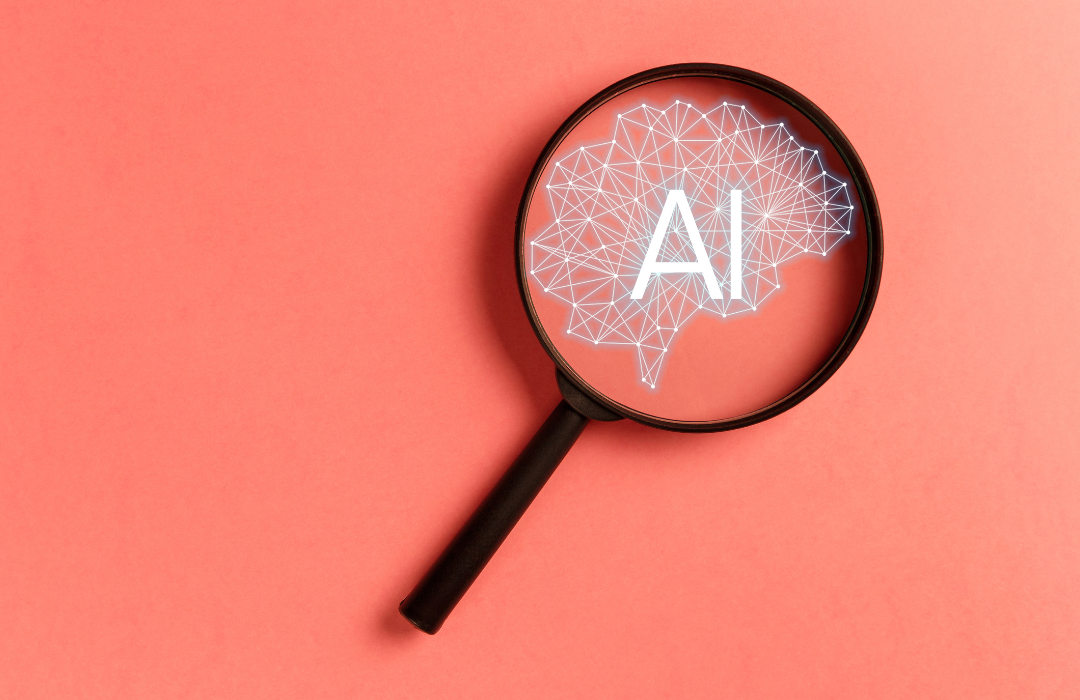Artificial Intelligence (AI) has undoubtedly become more prevalent in our lives, finding its way into various fields, including education and business.
While AI brings many benefits, it also comes with its drawbacks. For instance, some students resort to using AI to complete their homework and papers, and lazy writers attempt to generate thousands of generic content pieces using AI.
This misuse of AI has led to a lack of trust among people, raising concerns about the authenticity of content.
To address this issue, AI detection tools have emerged as a solution. In this blog post, you’ll discover if AI detection tools are reliable to use when identifying AI-generated content.
You’ll also explore the effectiveness of these tools in distinguishing between human-written and AI-generated material.
What Are AI Detection Tools?

AI detection tools, also known as AI writing detectors or AI content detectors, are specialized tools created to identify whether a text was partially or entirely generated by artificial intelligence (AI) tools like ChatGPT.
The primary purpose of AI detectors is to recognize instances where a piece of writing is likely to have been generated by AI.
These tools serve a crucial role, especially for educators who want to ensure that their students are producing original work and for moderators striving to weed out fake product reviews and other spam content.
How Do AI Content Detectors Work?
AI detectors rely on two key factors to identify AI-generated content: perplexity and burstiness.
1. Perplexity
Perplexity measures the level of unpredictability in a text, assessing its potential to confuse or perplex readers. AI language models aim to produce texts with low perplexity, ensuring coherence and fluency.
On the other hand, human writing tends to have higher perplexity due to its creative language choices and occasional typos. AI tools predict the most natural words to follow in a sentence, resulting in lower perplexity for AI-generated text.
2. Burstiness
Burstiness evaluates the variation in sentence structure and length within a text.
AI languages prioritize generating sentences of average length and adhering to conventional structures, resulting in a more uniform style.
This reduced variation in sentence structure becomes a key indicator of AI-generated content.
3. Watermarks
As a potential alternative, watermarks could aid in detecting AI-generated content.
OpenAI, the creators of ChatGPT, are exploring the idea of using invisible markings on AI-generated text for identification by another system.
However, the system’s details and whether watermarks will survive text editing remain unknown. While promising, it’s still in development, and further exploration is needed to fully understand its capabilities.
Are AI Writing Detection Tools Accurate?
AI writing detection tools act as helpful assistants, giving us clues about where content might come from.
If you suspect a piece of writing is generated by AI, running it through a detector that shows 100% AI likely means it was written using an AI tool like ChatGPT.
However, it’s important to remember that these results are just educated guesses and not absolute truths. Take them with a pinch of salt, as they are not 100% accurate.
I decided to put these tools to the test using three chapters from the Book of Genesis in the Bible using Originality.ai and ZeroGPT. The results were interesting: Originality.ai suggested 83% AI, while ZeroGPT showed 91.93% AI.
The outcome seemed strange and didn’t make much sense. It’s because we already know that the chapters we tested are from Genesis in the Bible, written way before AI tools like ChatGPT even existed.
You can also try testing articles written before 2020, and you might end up with similar results. This highlights the importance of understanding limitations of AI detection tools when using them to detect content.
How Do These Tools Affect Your Business?
1. These tools may destroy your relationship with your writers
If you solely rely on these detection tools and mistakenly conclude that your writers’ content is generated by AI, it can potentially damage the relationship you have with them.
What many people may not realize is that crafting a well-written piece strategically involves extensive research that makes up about 75% of the process, with actual writing accounting for the remaining 25%.
When you hire a writer, you’re not just paying them to put words on paper; you’re paying them to create content that aligns with what Google loves: strategic articles that demonstrate experience, expertise, authoritativeness, and trustworthiness (E-E-A-T).
Related:
6 Reasons Why Hiring A Professional Content Writer Is A Good Investment
Beyond Words: What Does A Copywriter Do Exactly?
2. AI detection tools can make you doubt your writer and fire them
While it may be tempting to replace writers with AI and create content yourself, it’s essential to do this option with caution.
Content creation for your business goes beyond mere clicks of a mouse; it requires thoughtful consideration and time. Every fingerprint on the keyboard is a reflection of your brand’s voice and values.
If you fire writers and do it yourself, you’ll realize that generating content, especially high-quality content, is not easy. While AI tools offer convenience, they cannot fully replicate the expertise and understanding that human writers bring to the table.
3. These AI detection tools are not meaningful for your content
When you use AI detection tools to check content that ranks high on Google, you’ll likely find a lot of AI-generated text. But here’s the interesting part: Even though AI created it, this content still ranks well on Google. How is this possible?
It turns out that Google made some clever changes to its algorithm. Instead of penalizing all AI-generated content, it focused on downranking automatic content that lacks uniqueness and fails to provide real value to readers. In other words, Google has become more discerning, and it prioritizes content that genuinely serves the needs of its users.
Related: Is AI-Generated Content Penalized By Google?
This shift in Google’s approach raises a thought-provoking question: Are these AI detection tools still as meaningful as they once seemed? While they can identify AI-generated text, the key to success on Google lies in offering high-quality content that captures the attention of your audience.
4. Perfect grammar can be a trade-off for humanizing your content
When you want your content to sound more human, you might need to loosen up a bit on perfect grammar. It’s because AI detection tools can sometimes give your content a surprisingly high AI score, even if you’ve used tools like Grammarly to correct mistakes.
It might seem unbelievable, but this could mean that content with excellent grammar and flawlessness could still be flagged as AI-generated.
So, you might wonder, “Do I have to compromise on perfect grammar to make my content feel more human?” Well, it’s not a simple yes or no answer. While AI detection tools are becoming more advanced, they still have their limitations.
Sometimes, they mistake well-written, grammatically-correct content for AI-generated text simply because it meets certain patterns or characteristics common to AI writing.
How to Manually Check If Content Is Valuable or Not

What should you do to check whether your content is written by AI or a human? Instead of solely relying on detection tools, here are some steps you can consider taking:
- Check for statistics: AI tools often struggle to add relevant and accurate statistics to your content. If your writing includes well-researched and specific statistics, it’s a good indication that a human might have crafted it, as they can better comprehend data and context.
- Look for up-to-date information: AI models have limitations, and they might not be updated with information beyond a certain date (e.g., after September 2021). To ensure your content remains authentic and relevant to current times, consider sourcing information from regularly updated blogs or reputable sources.
- Examine the language and tone: Content that genuinely connects with your target audience often requires deep research and understanding. If your writing addresses your audience in a relatable and personalized manner, it’s likely to have been created by a human who has taken the time to connect with your readers.
- Evaluate the depth of content: AI writing tools like ChatGPT might struggle with creating in-depth and comprehensive content. If your material goes beyond surface-level information and delves into detailed explanations or analyses, it’s more likely to be the work of a human writer.
Final Thoughts
To wrap it up, AI tools and AI detection tools work together, helping each other to survive in the digital world. However, when it comes to determining if content is written by AI or not, it’s crucial not to solely rely on AI detectors. These tools can give us ideas, but they’re not always accurate and might sometimes misjudge well-crafted human content as AI-generated, and vice versa.
As a content creator or business owner, your ability to discern the quality of your content is of utmost importance. Instead of solely depending on AI detection, trust your critical thinking skills to differentiate between high-quality content and generic one.




